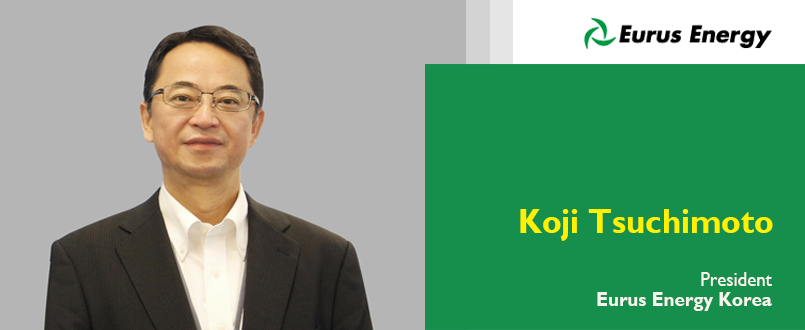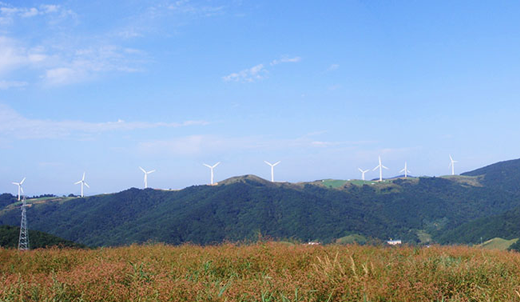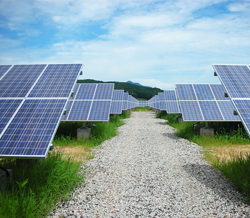

Eurus Energy Korea is working closely with
local governments and private companies to help
Korea move toward a brighter—and greener—future
U.S. President Donald Trump’s
decision to withdraw America
from the Paris climate accord
shook the world last month,
with environmentalists and politicians
expressing deep concern. Despite Trump’s
decision, world leaders pledged to honor
the Paris accord, essentially an agreement
between 196 countries to reduce emissions
of greenhouse gases. His decision may
have raised eyebrows among the international
community, but more importantly, it
shed some much needed light on renewable
energy and energy efficiency. Many
private companies are now more vocal
than ever to combatting climate change.
But even before the Paris agreement
came to life, there’s one company that has
been pushing forward with renewable
energy projects since the late 1980s: Eurus
Energy Holdings. As Japan’s largest wind
power business, Eurus is owned jointly by
Toyota Tsusho Corporation and Tokyo
Electric Power Company Holdings. It has
been actively pursuing its wind and photovoltaic
power generation business in 11
countries, including the United States,
Spain, Italy and Australia. The company,
choosing Korea as a base for expanding in
the Northeast Asia region, established
Eurus Energy Korea (EEK).
Korea proved to be a suitable busi-
ness environment for companies like
Eurus to
commercialize eco-friendly ventures, especially
with the rapid

growth of the country’s
photovoltaics and wind power sectors. The two sectors now account for 34
percent of the renewable energy industry’s
employment and 80 percent of sales. The
Korean government also recently
announced that by 2030, it plans to
increase its use of renewable energy to 20
percent, a 15 percent increase from today’s
proportion.
EEK is working closely with Korea’s
public and private spheres to help the
country move toward a brighter, greener
future. “In an effort to supply renewable energy and lower carbon
dioxide levels in
Korea, we hired local
employees with
great insight and a good grasp of the environment,”
says Koji Tsuchimoto,
President of EEK. “By establishing a subsidiary
in Korea, we have greater mobility
in domestic markets.”
The company currently manages three
wind power sites and two solar power sites
in Korea. Most notably, EEK established
Gangwon Wind Park in Daegwallyeong in
Gangwon-do in 2005 The park was authorized by the United Nations as a
Clean Development Mechanism Project in
accordance with the Kyoto Protocol.

Just three years later, Eurus and POSCO, Korea’s leading engineering and construction corporation, completed construction of Taegisan Wind Farm. The complex, located on the ridge of Mt. Taegi, is home to 20 wind turbines. It’s capable of supplying energy to about 25,000 households while cutting down on carbon dioxide emissions by some 60,000 tons a year. EEK also operates two solar power plants in Jeolla-do: the South-West Sunchang Photovoltaic
Power Plant and
the Jindo Photovoltaic Power Plant. But
that’s not all—EEK works closely with
Korea’s power and construction companies
through the establishment of joint
ventures.
Although EEK is taking full advantage
of Korea’s great business environment,
Tsuchimoto says the Korean government
can do more. “Korea’s financial market
needs to be more open. If difficulties in
procurement and various regulations that
hinder business expansion can be resolved,
I think the country can significantly
improve its appeal as an investment destination.”
Tsuchimoto mentions that gaining goverment
approval for building renewable
energy generation facilities in Korea is a
difficult and complicated process. However, the government’s levy exemption
certificate system,
designed to accelerate the introduction of renewable energy across the country, has encouraged the company to actively pursue further business in Korea. Despite its significant impact on Korea’s renewable energy sector, EEK is not resting on its laurels, instead choosing to make a mark that goes well beyond the nation’s borders.